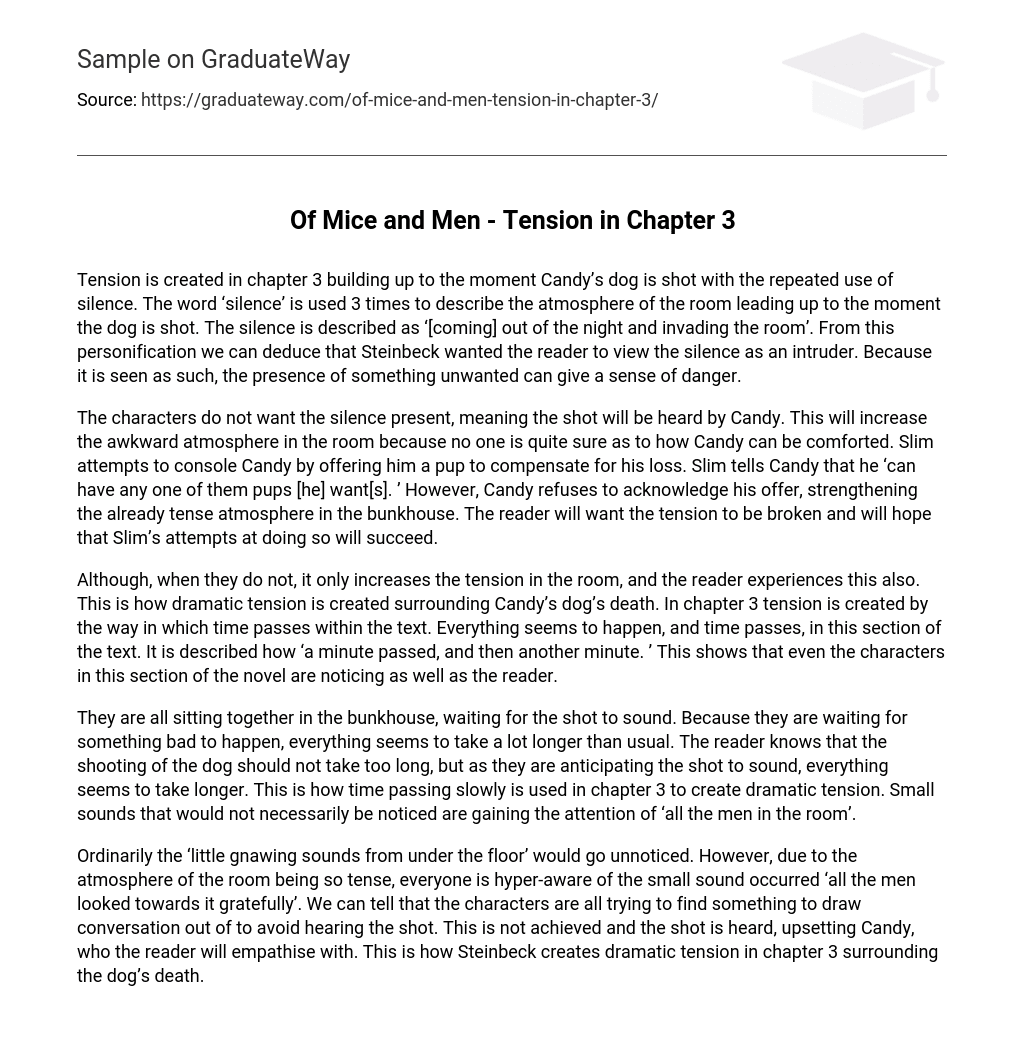Tension is created in chapter 3 building up to the moment Candy’s dog is shot with the repeated use of silence. The word ‘silence’ is used 3 times to describe the atmosphere of the room leading up to the moment the dog is shot. The silence is described as ‘[coming] out of the night and invading the room’. From this personification we can deduce that Steinbeck wanted the reader to view the silence as an intruder. Because it is seen as such, the presence of something unwanted can give a sense of danger.
The characters do not want the silence present, meaning the shot will be heard by Candy. This will increase the awkward atmosphere in the room because no one is quite sure as to how Candy can be comforted. Slim attempts to console Candy by offering him a pup to compensate for his loss. Slim tells Candy that he ‘can have any one of them pups [he] want[s]. ’ However, Candy refuses to acknowledge his offer, strengthening the already tense atmosphere in the bunkhouse. The reader will want the tension to be broken and will hope that Slim’s attempts at doing so will succeed.
Although, when they do not, it only increases the tension in the room, and the reader experiences this also. This is how dramatic tension is created surrounding Candy’s dog’s death. In chapter 3 tension is created by the way in which time passes within the text. Everything seems to happen, and time passes, in this section of the text. It is described how ‘a minute passed, and then another minute. ’ This shows that even the characters in this section of the novel are noticing as well as the reader.
They are all sitting together in the bunkhouse, waiting for the shot to sound. Because they are waiting for something bad to happen, everything seems to take a lot longer than usual. The reader knows that the shooting of the dog should not take too long, but as they are anticipating the shot to sound, everything seems to take longer. This is how time passing slowly is used in chapter 3 to create dramatic tension. Small sounds that would not necessarily be noticed are gaining the attention of ‘all the men in the room’.
Ordinarily the ‘little gnawing sounds from under the floor’ would go unnoticed. However, due to the atmosphere of the room being so tense, everyone is hyper-aware of the small sound occurred ‘all the men looked towards it gratefully’. We can tell that the characters are all trying to find something to draw conversation out of to avoid hearing the shot. This is not achieved and the shot is heard, upsetting Candy, who the reader will empathise with. This is how Steinbeck creates dramatic tension in chapter 3 surrounding the dog’s death.





